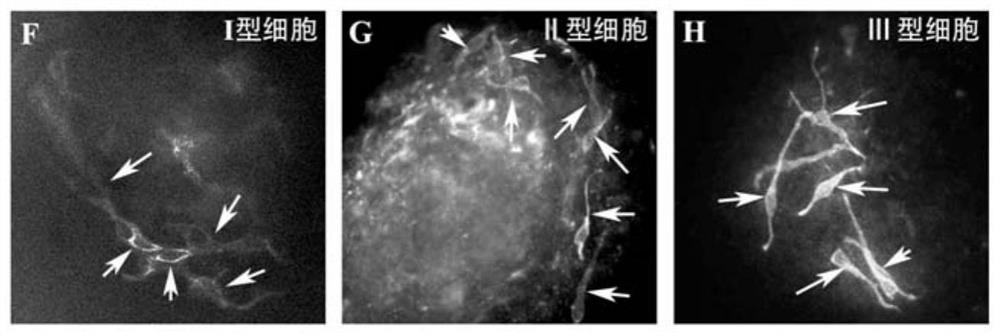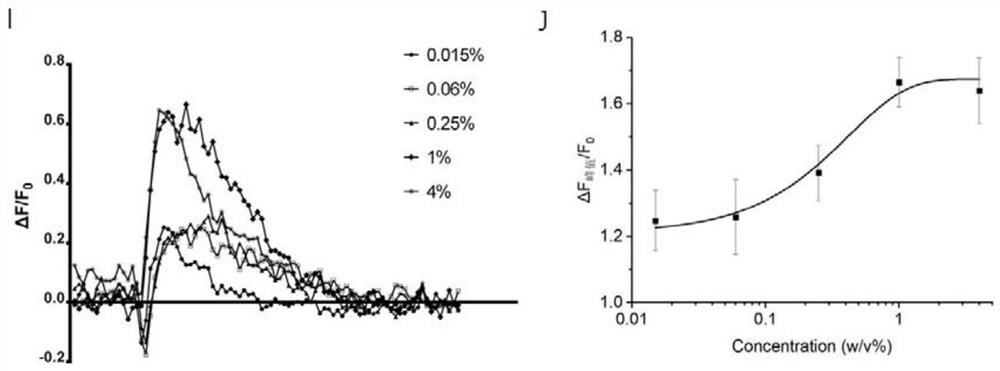Taste substance response evaluation method based on in-vitro monolayer cultured taste cells
A taste cell and taste technology, applied in biochemical equipment and methods, animal cells, culture process, etc., can solve the problems of high labor cost, poor result stability, and inability to truly reflect the taste response characteristics, and achieve the effect of high sensitivity
- Summary
- Abstract
- Description
- Claims
- Application Information
AI Technical Summary
Problems solved by technology
Method used
Image
Examples
Embodiment 1
[0025] Step 1. After cervical dislocation of 10-week-old Lgr5-GFP mice, ophthalmic scissors were used to separate the mouse tongue from the oral cavity; put it into a petri dish 1 containing phosphate buffered saline, clean the residual blood and hair on the tongue surface, and transfer to In the petri dish 2 containing phosphate buffer, use a syringe to inject the mixed enzyme solution into the tongue between the tongue epithelium and the muscle layer to make the whole tongue swell; put the tongue injected with the enzyme solution into the petri dish containing phosphate buffer 3, incubate at 37°C for 10 minutes; after the incubation, use ophthalmic curved scissors to separate the epithelial layer and a small amount of muscle layer in the area where the papillae and leaf-shaped papillae are located at the back and rear of the tongue, and put them in a small amount of 0.25% Trypsin digestion solution culture dish 4; ophthalmic department shears and separates the tissue until th...
PUM
 Login to View More
Login to View More Abstract
Description
Claims
Application Information
 Login to View More
Login to View More - R&D
- Intellectual Property
- Life Sciences
- Materials
- Tech Scout
- Unparalleled Data Quality
- Higher Quality Content
- 60% Fewer Hallucinations
Browse by: Latest US Patents, China's latest patents, Technical Efficacy Thesaurus, Application Domain, Technology Topic, Popular Technical Reports.
© 2025 PatSnap. All rights reserved.Legal|Privacy policy|Modern Slavery Act Transparency Statement|Sitemap|About US| Contact US: help@patsnap.com



